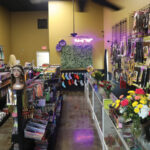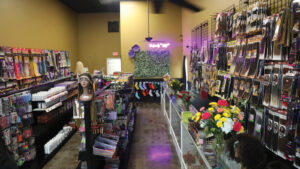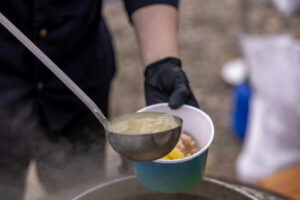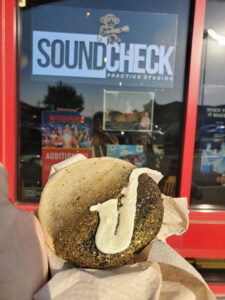With 321 students who are pre-kindergarten through 12th grade, Columbia Independent School is small but has big plans underway for a new athletics and arts facility.
Adam Dubé, head of school for CIS, says the new building will help meet the needs of the existing students and show others that CIS has the resources to support athletics and the arts.
“We have a number of students who are looking for athletic and arts opportunities, and as a school, we just haven’t had the facilities, the resources, to support that quite as much,” Dubé says.
As of now, physical education classes are conducted in two small fitness rooms, and art performances are conducted in either one small classroom or the cafeteria.
“We have some really creative and dedicated faculty who have done their best with those spaces,” Dubé says. “But it’s pretty challenging.”
This new facility has been something CIS has wanted since it moved to its current location on North Stadium Boulevard in 2009. Later, two members on the board of trustees, Sara Potterfield and Lisa Morrissey, came up with a plan one night at Morrissey’s kitchen table.
“[We] got mad and sat down at her kitchen table, and we sketched it out on a piece of paper, and we were like, ‘We can build this,’” Potterfield says. “Those original sketches are pretty darn close to what we ended up with.”
Now the plan is set, but the funds must be in place before the building begins. Dubé says how much is needed hasn’t been calculated yet, but it’s more than $2 million. So far, the board of trustees has raised $1.3 million toward this goal in the past year.
To raise the rest of the funds, Bridgid Kinney, director of advancement and business, will talk with foundations, parents, former families and others about the goal of the facility and how it will help the school.
“We’re continuing to look within our community as well as the wider community of Columbia and even further,” Dubé says. “What other organizations, foundations, individuals have a mission like we do? Would they be willing to get behind us and support us?”
The mission of CIS
CIS began about 23 years ago, when a group of families in Columbia decided there should be a college preparatory school in the area that was independent and not necessarily religiously affiliated. The school opened several years later, in 1997, on the Stephens College campus and at that time only had sixth-graders. In time, more grades were added, and now CIS has pre-kindergartners, which they call junior kindergartners, through 12th-graders.
The fact that CIS is independent means it is governed by a self-sustaining board, and those at CIS have more freedom to implement programs and changes to the school that a regular public school might not have.
“No one can come to us and say, ‘You can’t do that,’” Dubé says. “If we wanted to, we could adopt it.”
Overall, CIS aims to guide students to pursue excellence through academic, physical and creative achievement while committing to integrity, trust and responsibility.
“Everything that we do at our school is really focused with this idea of preparing students for success in college and success in life,” Dubé says.
What the CIS mission looks like
First, the school has an academically rigorous program to prepare students for college. The results of this program can be seen in the students’ academic achievements. The average ACT score is around 28, the students’ test scores are in the 80th to 90th percentile and AP test scores are well above state averages. To be a student at CIS, an application must be submitted with teacher recommendations, and depending on the age, different types of testing will occur.
Dubé says high test scores aren’t the only sign that CIS is meeting its goal of achievement. Having a diversely aged student body also contributes to this.
“We’ve got 4-year-old students and 18-year-old students, and they’re all in the same building,” Dubé says. “They interact during the course of the day, and sometimes those interactions are just serendipitous.”
Dubé says he’s seen older students helping younger students tie their shoes, carry their tray in the lunchroom or getting a drink of water. He’s also seen older students tutoring and being mentors for younger students.
“[This] gives them a greater sense of leadership,” Dubé says. “It develops empathy.”
The environment is not only diverse, but it’s also small enough to be helpful to students, with a teacher-to-student ratio of about 1:6.
“Kids don’t get slotted in a way that they might in a larger environment,” Dubé says. “When you’re in a really large environment, you have to try to find a way to pair it down to make it a little more manageable sometimes. … Because we have this environment that’s small enough to know and support individual kids’ interests, they have the opportunity to do more.”
Even with the growth CIS could see in the years to come, there are still limits in place to keep the classroom size small.
“We’re definitely not looking to grow limitlessly,” Dubé says. “That’s not part of our strategic vision as a school.”
The future of CIS
Dubé, Kinney and Potterfield believe in the mission of CIS because they’ve seen it firsthand.
Potterfield first was introduced to CIS when she brought her daughter there for junior kindergarten to try out the school.
“By the third day, I was absolutely sold on the size and the feel,” she says. “I get goose bumps on my legs just talking about it.
“When they asked me to join the board the following year, I says yes,” she continues. “I mean, this place is amazing. I’m so passionate about the mission and the support that it gives the kids. My kids are so self-confident because of CIS.”
Dubé says it’s people such as Potterfield that make his job better, those who are committed wholeheartedly to the school.
“I think there’s an entrepreneurial spirit on the part of many of our trustees,” Dubé says. “[Also], I’ve got the faculty who are passionate, dedicated, committed to the students and then the students, which is really why all of us get into education, because we believe in the possibility of kids.”
Kinney, who is more of a businesswoman than a teacher, says her love for what the school was doing for her daughter compelled her to take a larger role.
“I just loved the school so much and loved what it was doing for my daughter and loved the community that I really believed that this skillset that I have could push the mission forward,” Kinney says. “And so, I kind of just jumped right in. And it’s the best decision I’ve ever made.”
As for what’s left to do in preparing for the new athletic and arts facility, Dubé, Kinney and Potterfield are hopeful about the future.
“We feel really very fortunate to have the pledges that we already have in hand,” Dubé says. “That’s a lot of money in a pretty short period of time, and there have been some very, very generous donors who have stepped up to get us to this point.”
“We’re in such a great place in this school,” Potterfield says.
“This is Adam [Dubé]’s second year; he has brought this amazing family sense to the school,” Potterfield says. “We had it before, and now it’s even better. It’s such a great place, and raising the money is challenging, but it’s feasible.”







